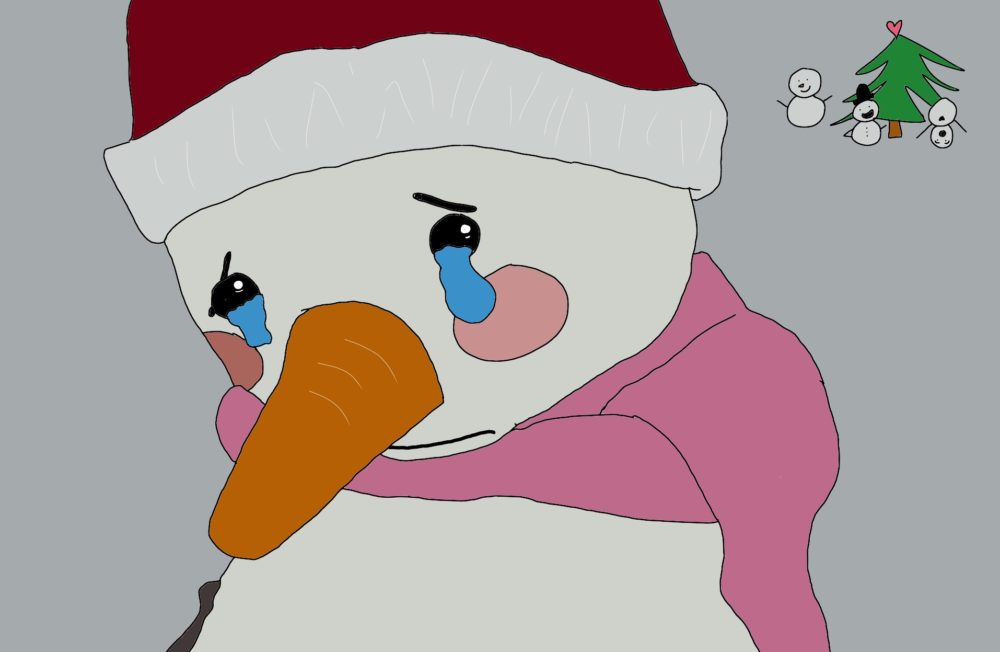
By Arden Nguyen and Karen Phan
The days are getting colder and bleaker in Southern California, which means winter seasonal affective disorder (SAD), commonly referred to as “seasonal depression,” is around the corner.
“Seasonal affective [disorder] . . . is a type of depression that is caused by the change in the seasons,” Student Support School Psychologist Cynthia Olaya said. “Typically, it starts in the fall and goes into the winter months, but sometimes [it] can actually impact people in this shift from spring to summer.”
The American Psychiatric Association links SAD to fluctuating melatonin and serotonin levels, which are hormones that regulate sleep and mood, and impacted circadian rhythms, which is the body’s sleep-wake clock, as a result of changes in light exposure.
“[SAD] usually affects those places that are further from the equator [such as] the Pacific Northwest, way up north where it’s usually darker and colder and drearier,” School Nurse Marci McLean-Crawford (Nurse Marci) said. “I would say it’s probably less common [in Southern California] just because we tend to have a lot more sunlight.”
The symptoms of SAD are the same as those of depression and include loss of interest in activities you enjoy, moodiness, fatigue, feelings of hopelessness, changes in appetite and sleep and thoughts of suicide.
People are diagnosed with SAD when they experience the symptoms of major depression and winter or summer-onset SAD during specific seasons for at least two years, says the National Institute of Mental Health (NIMH). The NIMH also states that SAD is more frequent in women and young adults than men and older adults.
“There are actually a few ways [SAD] can be treated, and two of them are exactly like treating normal depression: therapy, and sometimes medication,” Olaya said. “A third treatment for seasonal depression sounds kind of crazy but it’s actually effective, and it’s light therapy.”
Light therapy involves exposure to artificial light first thing in the morning for a certain amount of time each day. It consists of a light therapy box that emits a bright glow to stimulate the production of serotonin and restore a normal circadian rhythm. Continuous light therapy can also boost one’s mood and energy to counteract the effects of seasonal depression.
“On the surface, [SAD] looks very much like any other kind of type of depression, but it tends to be cyclical in nature,” Olaya said.
If SAD continues beyond its seasonal time frame, then it would not be classified as SAD, according to Nurse Marci.
“There’s probably some other mental health issues going on if it persists year-round,” Nurse Marci said.
Often, students are hesitant to talk about problems that they are facing. Nurse Marci advises friends to help each other when they believe a friend isn’t feeling well and refrain from judging, as that contributes to the stigma around psychological disorders and may discourage efforts to speak up.
Both Nurse Marci and Olaya also agree that talking to a trusted adult, such as their parents, favorite teacher or family friend, may help students realize that getting help is not as scary as they anticipate.
“A lot of people think that therapy is forever once you start talking to a counselor or psychologist or therapy,” Olaya said. “The reality is that for most of the things that kids bring forward to people in schools, they often will require not that many sessions of counseling to resolve the situation.”
Some issues or situations, such as when a student is diagnosed with clinical depression, may require additional counseling beyond the school day, but students do not need to worry because the counseling staff is always here to make things happen, Olaya added.
“There are a lot of people you can connect to here, and they [will] just set up a schedule to see when you have time and they have time and put it together,” Nurse Marci said. “If there’s an emergency, then you just need to let somebody know it’s an emergency, and we’ll make it happen sooner.”
You can contact and visit these members of FVHS’ counseling for advice and help:
Joseph Ampudia, School Psychologist: jampudia@hbuhsd.edu
Brianna Hill, School Psychologist: bhill@hbuhsd.edu
Connie Maddox, School Psychologist: cmaddox@hbuhsd.edu
Marci McLean-Crawford, School Nurse: mmcleancrawford@hbuhsd.edu
Cynthia Olaya, Student Support School Psychologist: colaya@hbuhsd.edu
Kayla Perkoski, Student Wellness School Psychologist: kperkoski@hbuhsd.edu
Marilyn Wong, School Counselor: mwong@hbuhsd.edu
Here are some hotlines you can use:
National Suicide Prevention Lifeline (24/7): 800-273-8255 (on the back of student ID cards)
Confidential text hotline to report bullying, crime or mental health crisis: 714-462-4796 (on the back of student ID cards)
National Alliance on Mental Illness HelpLine (Monday through Friday, 10 a.m. to 6 p.m. ET): 800-950-6264
Crisis Text Line (24/7): 741-741





